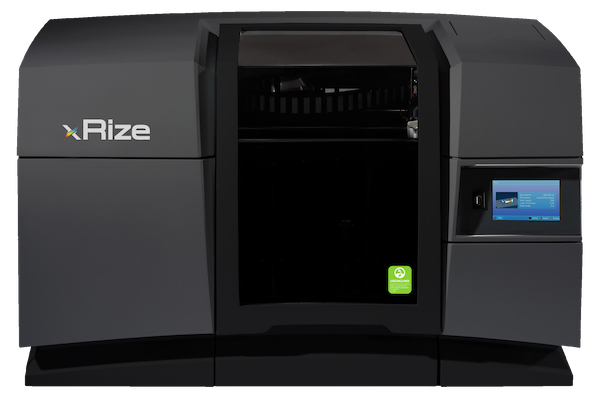RIZE Promotes “Safe at Home” Manufacturing
RIZE is positioning its 2XC GREENGUARD-certified 3D printer as a foundation for collaborative distributed manufacturing.

The cornerstone of RIZE’s “Safe at Home” initiative is the RIZE 2XC, a GREENGUARD-certified 3D printer aimed at promoting safe manufacturing at home. Image Courtesy of RIZE Inc.
February 26, 2021
One year in, COVID-19 has revealed a lot about a host of global vulnerabilities, including the need for supply chain resiliency as factories powered down and employees headed home for remote work. To address what it sees as a growing need for distributed, self-sufficient supply chains, RIZE is promoting its 2XC GREENGUARD-certified 3D printer as a cornerstone for distributed manufacturing.
As part of its new “Safe at Home” manufacturing initiative, RIZE is promoting an adaptive business model aimed at driving self-reliance and business continuity. The program, which features the 2XC as the centerpiece, will encourage companies to build a digitally-enabled ecosystem that encourages productive design and collaboration among the legions of employees now working from home in the new normal of COVID-19, says Andy Kalambi, RIZE CEO.
Kalambi points to the role 3D printing played this last year in producing much needed Personal Protective Equipment (PPE) such as masks and shields when it was in short supply. “3D printing helped in locally producing sorely needed PPE for healthcare workers to fill a gap that had arisen do to a sudden rise in demand coupled with supply chain distributions from producer countries like China,” he explains. “This highlighted the value of 3D printing in creating a distributed manufacturing network.”
RIZE, with its focus on creating strong, durable parts safely anywhere—be it home, office, or factory floor—has a natural role to play in creating these next-generation, self-sufficient supply chains, Kalambi contends. The RIZE 2XC desktop professional 3D printer has received UL GREENGUARD certification for its adherence to rigorous third-party chemical emissions standards aimed at reducing the risk of chemical exposure.
Research has shown that many desktop 3D printers release volatile organic compounds (VOCs) and ultrafine particles (UFPs) into the air that are known health hazards. GREENGUARD certification ensures that products adhere to ANSI/CAN/UL 2904 standards, thus they emit low levels of chemicals into indoor air during use and contribute to safer, healthier work environments.
“RIZE technology is purpose-built for sustainability, is eco-friendly, and creates full-functional parts,” Kalambi says. “Having a UL GREENGUARD certification assures a clean emissions environment suited for safe at-home usage.” Specifically, there is no requirement for toxic chemicals for post processing and the materials are non-toxic and recyclable, making for easy disposal, he adds.
Festo SE & Co. KG, a leader in automation technology, has signed on to participate in RIZE’s “Safe at Home” program. The company has purchased RIZE 2XC printers and deployed them in the homes of key team members in the United States and Germany. Festo is also working with RIZE to create workflows that deliver high precision, repeatable, and highly durable parts regardless of where employees are working.
“The software platforms available today have intelligent functions that simplify the desig process thereby opening up opportunities for people with varied skill levels to contribute towards the digital supply chain,” says Nuzha Yakoob, head of technology and innovation NAM, at Festo. “We are happy to support RIZE in exploring these possibilities and creating a digitized, distributed manufacturing network.”
Subscribe to our FREE magazine, FREE email newsletters or both!
About the Author
Beth Stackpole is a contributing editor to Digital Engineering. Send e-mail about this article to [email protected].
Follow DE





